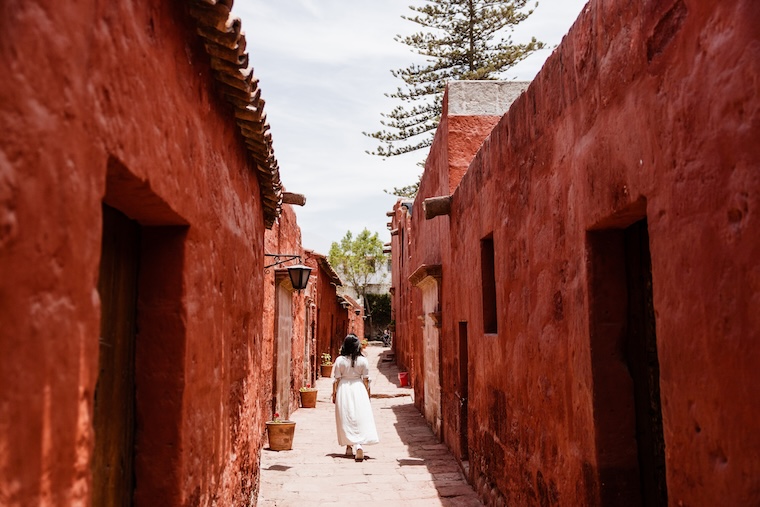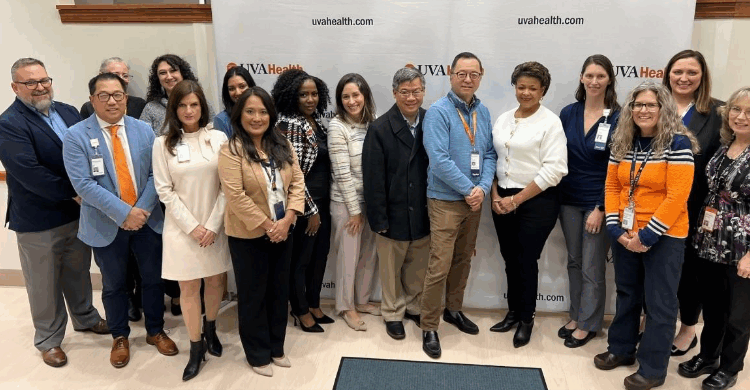
University of Virginia researchers have created a powerful computer model to map housing construction types in low- and middle-income countries. Here, a woman walks in Arequipa, Peru.
Call it an architectural blueprint for a healthier future for people around the globe.
To reduce the spread of dangerous infectious diseases, researchers from across the University of Virginia have created a powerful computer model to map the quality of housing construction in low- and middle-income countries. The types and quality of construction materials – such as whether homes have floors made of bare earth, or whether mosquitoes can enter easily through gaps in thatched roofs or bamboo wallls – play a huge role in how easily contagious diseases spread.
Doctors, scientists, governments and community leaders will be able to use the model predictions free of charge to determine how best to target resources to help people at risk, the UVA researchers say.
“There’s increasing attention on improving housing quality as a global strategy for controlling infectious diseases,” said Josh Colston, PhD, an epidemiologist at the UVA School of Medicine’s Division of Infectious Diseases and International Health who led the study. “So it’s crucial to know where the hotspots are that are most in need of these interventions.”
How Housing Affects Health
The new model, a project of UVA’s Planetary Child Health & Enterics Observatory (Plan-EO), represents a collaboration among researchers in the Schools of Medicine, Data Science and Engineering as well as the College of Arts & Sciences. Together they have created a impactful tool with far-reaching applications across different fields, from public health to civil engineering.
There are numerous ways in which the materials and techniques used to build a dwelling affect the risk of contracting infections for the family that lives there. This is particularly true in tropical and rural regions of the world, where contagious diseases such as malaria and dengue fever circulate. In Africa, for example, 80% of malaria infections occur indoors. This is in large part because walls and roofs constructed of natural, locally available materials allow many entry points for mosquitoes that spread the deadly disease. In Mexico and Peru, meanwhile, children who live in homes with covered floors are less likely to develop potentially deadly diarrhea spread by parasites and pathogens than those in dwelling with floors of bare earth.
With that in mind, the UVA researchers set out to create a tool to predict housing quality and assess how local infrastructure affects the health risks residents face. To do that, they assembled reams of data about the materials used in housing construction, gleaned from hundreds of nationally representative household surveys carried out during the last 20 years. This included information about households in nearly 300,000 locations across the world’s low- and middle-income countries.
They then classified the construction materials as “improved” or “unimproved,” so they could easily identify areas that would benefit from housing construction improvements.
Based on their model, the scientists determined that coverage of improved roofs and walls was relatively common in the Central and East Asia, Pacific and Latin American and Caribbean areas, while it was much less so in sub-Saharan Africa. Improvements in floors were particularly uncommon in sub-Saharan Africa, suggesting that resources and efforts should be focused on that region.
In general, there is great need for improved housing infrastructure across the Sahel and southern Sahara regions of Africa, much of inland Amazonia and areas of the Tibetan plateau, Plan-EO’s model suggests.
Colston and his colleagues have made their results available for free at www.datadryad.org.
“As an example, imagine that you are public health manager in a country like Ecuador or Colombia, trying to control the spread of Chagas disease, which is transmitted by bloodsucking beetles that hide out in the thatched roofs of rural houses,” said Bin Fang, PhD, a researcher on the team from UVA’s Department of Civil and Environmental Engineering. “With these findings now available, you will actually be able to navigate to specific regions of your country using GIS software, see where the pockets of low coverage of improved roofing are located, and target your resources to those areas.”
Findings Published
The researchers have reported their findings in the scientific journal PLOS Global Public Health. The research team consisted of Colston, Fang, Malena Nong, Pavel Chernyavskiy, Navya Annapareddy, Venkataraman Lakshmi and Margaret Kosek.
The project was funded by the NIH’s National Institute of Allergy and Infectious Diseases, the European Union and UVA’s Engineering in Medicine funding program.
To keep up with the latest medical research news from UVA, subscribe to the Making of Medicine blog.



